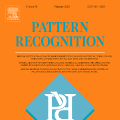In this paper, we present a biologically grounded approach to reservoir computing (RC), in which a network of cultured biological neurons serves as the reservoir substrate. This system, referred to as biological reservoir computing (BRC), replaces artificial recurrent units with the spontaneous and evoked activity of living neurons. A multi-electrode array (MEA) enables simultaneous stimulation and readout across multiple sites: inputs are delivered through a subset of electrodes, while the remaining ones capture the resulting neural responses, mapping input patterns into a high-dimensional biological feature space. We evaluate the system through a case study on digit classification using a custom dataset. Input images are encoded and delivered to the biological reservoir via electrical stimulation, and the corresponding neural activity is used to train a simple linear classifier. To contextualize the performance of the biological system, we also include a comparison with a standard artificial reservoir trained on the same task. The results indicate that the biological reservoir can effectively support classification, highlighting its potential as a viable and interpretable computational substrate. We believe this work contributes to the broader effort of integrating biological principles into machine learning and aligns with the goals of human-inspired vision by exploring how living neural systems can inform the design of efficient and biologically plausible models.
翻译:暂无翻译



